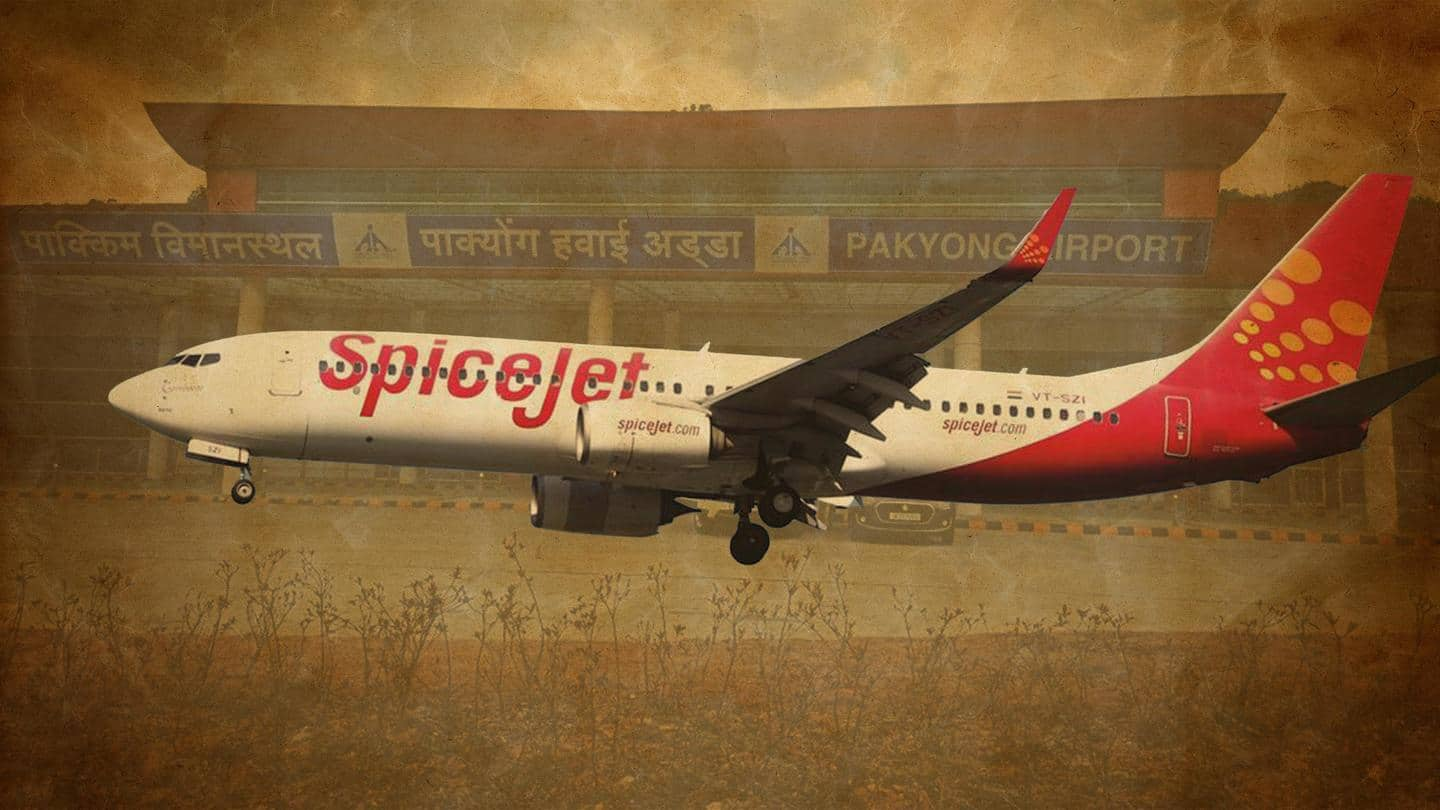
No flights to Sikkim as SpiceJet suspends operations to Pakyong
What's the story
Sikkim will lose civil air connectivity indefinitely as the only carrier to operate in the state, SpiceJet has decided to suspend its operations to Pakyong Airport mentioning functional requirements.
The budget airline will operate its last flight on October 30, after which people wanting to visit the Himalayan state will have to travel at least five hours on road from the nearest airport.
Context
Why does this story matter?
Due to Directorate General of Civil Aviation (DGCA) orders, SpiceJet is currently authorized to fly less than 50% of its flights.
The airline has reported around a dozen mechanical snags since June, prompting the aviation authorities to impose an eight-week flying restriction in July, which was later extended till October 29.
SpiceJet topped the list of airlines whose services were deemed the worst post-COVID-19.
Information
One of the highest airports in the country
Sikkim's sole airport in Pakyong near Gangtok is one of the highest airports in the country at 4,500 feet.
Flights to Pakyong were operated under the Ude Desh Ka Aam Naagrik-Regional Connectivity Scheme (UDAN-RCS).
Currently, SpiceJet has two scheduled flights to Pakyong, one each from Delhi and Kolkata.
The closest airport to the region is Bagdogra Airport in West Bengal.
Details
Forced to make emergency landing in Hyderabad last week
SpiceJet has a fleet of 30 Bombardier Dash 8 Q400 aircrafts for regional flights.
It flies aircraft from the same fleet to Sikkim.
A SpiceJet Dash 8 aircraft made an emergency landing in Hyderabad after taking off from Goa on October 12 as excessive smoke was reported from the cabin.
The DGCA directed SpiceJet to analyze engines of the entire fleet within one week.
Airport
Inaugurated in 2018 as 100th operational airport
Built at a cost of Rs. 605 crore, Prime Minister Narendra Modi inaugurated the airport in September 2018 as the country's 100th operational airport.
It is spread across 201 acre located on the top of a hill nearly 2 km above Pakyong village and around 60 km from the India-China border.
Its construction began in 2009 but faced protests by locals against land acquisition.